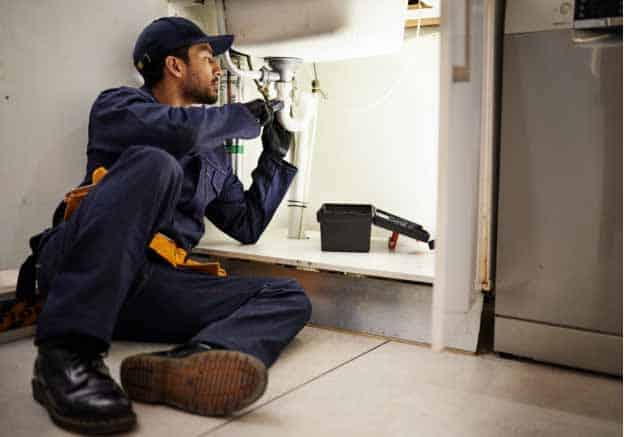Tips to Measure and Right Plumbing Pipes
When you are getting ready to install new plumbing pipes you will need to check that your pipes are the correct size. Measuring your pipes on your own is an easy process if you know the steps. Once you have your plumbing pipes measured properly you can move on to installing them in your plumbing system.
How To Measure Your Plumbing Pipes
No matter what kind of material your plumbing pipes are made from you will need to get two types of measurements. The two measurements that you should be concerned about are the Nominal Pipe Size (NPS) and the Outside Diameter (OD).
You can find a pipe’s OD by measuring the outside width of the pipe. The NPS can be found by cross-referencing an ASME chart with the OD measurement. OD and NPS measurements are different measurements. Plumbers will typically refer to the NPS measurement when they are talking about or shopping for plumbing pipes.
How To Know The Size Of Your Plumbing Pipes
You can easily find the size of your plumbing pipe if you look at the pipe itself. The NPS is always printed or labeled on all plumbing fittings and pipes. Plastic plumbing pipes will have the pipe’s thickness, size, and kind of plastic material printed on the side of it. Whereas copper piping will be labeled with the kind of copper material that makes up the pipe.
How You Can Measure Your Plumbing Pipes
There are three main methods of measuring your plumbing pipes yourself. When you need to convert your OD measurement into an NPS measurement the following charts will be of great use.
Copper Pipe NPS Reference Chart
| Copper Pipe Size | Outside Diameter | Pipe Circumference |
| 1/2″ | 5/8″ | 2″ |
| 3/4″ | 7/8″ | 2-5/8″ |
| 1″ | 1-1/8″ | 3-1/4″ |
| 1-1/4″ | 1-3/8″ | 4-1/8″ |
| 1-1/2″ | 1-5/8″ | 5-1/8″ |
| 2″ | 2-1/8″ | 6-5/8″ |
| 3″ | 3-1/8″ | 9-3/4″ |
| 4″ | 4-1/8″ | 13″ |
PVC, ABS, CPVC, Brass, and Steel Pipe NPS Reference Chart
| Plastic/Metal Pipe Size | Outside Diameter | Pipe Circumference |
| 1/2″ | 7/8″ | 2-5/8″ |
| 3/4″ | 1-1/8″ | 3-1/4″ |
| 1″ | 1-3/8″ | 4-1/8″ |
| 1-1/4″ | 1-5/8″ | 5-1/4″ |
| 1-1/2″ | 1-7/8″ | 6″ |
| 2″ | 2-3/8″ | 7-1/2″ |
| 3″ | 3-3/8″ | 11″ |
| 4″ | 4-3/8″ | 14-1/8″ |
Direct Diameter Measurement
If your pipe is already installed you won’t be able to get the direct diameter measurement. In order to measure the direct diameter of a plumbing pipe, you will need to use a measuring tape or ruler and stretch it across the open end of your pipe.
Outside Diameter Measurement
Finding a plumbing pipe’s OD measurement can be done by using calipers to measure the outside of the pipe. This measurement will be the OD of your pipe. This method is easily used if your pipe is already installed and you can’t access an open end.
Circumference Measurement
Finding the circumference measurement of a pipe requires a little bit of math. But we’ll give you the exact steps and equation to make this process easy for you.
Use flexible tape or string to wrap around the pipe. Measure the string or tape and make a note of the measurement. You’ll then divide the circumference measurement by pi (pi=3.1415). This will give you the diameter of your pipe. You can then reference the above charts to find your pipe’s NPS.
Tips For Pipe Installation
If you’d like to avoid having a repair done by a professional, you can repair or replace your own plumbing pipes. This is best if it’s only one old or broken pipe as opposed to a complicated plumbing job. Large jobs require the help of a licensed plumber.

Install PEX Pipes
If you’re trying to only replace a portion or small area of your plumbing it is highly recommended to use PEX pipes. PEX is a great plastic material that will work with your plumbing system. The process for installation is much easier when working with this material. It is also cheaper, only requires simple fittings, is flexible, and cuts easily.
Ensure Your Pipe Size Is Correct
Having the correct pipe size for your plumbing job is critical to your plumbing system functioning properly. All plumbing requires very specific pipe sizes so make sure you measure them and have the right size for the job. Also, check your local codes to ensure yours are right.
Maintain The Same Pipe Materials
When different metals or pipe materials make contact with each other in your plumbing system it can cause the pipes to corrode at a faster rate. Inspect your old or current pipes to ensure that you use the same kind of plumbing pipe material moving forward. Very specific fittings will need to be used to attach pipes together if the pipes are made of different materials.

Look Over Fittings
Plumbing pipe fittings are the part of your plumbing system that attach pipes to each other. They also redirect water flow. Make sure to look at all fittings to ensure you have the right ones for the material you are using as different pipe materials will require certain fittings. Having the right fittings will prevent leaks in your system.
Before Attaching, Dry-Fit Your Pipes
Before you permanently attach or glue your pipes to each other you want to make sure you dry-fit them. Dry-fitting is when you take the pipe that does not have a fitting present and check that the size is correct for your job.
Service Champions are experts in pipe installation and replacement. Give us a call today to schedule your pipe installation!

